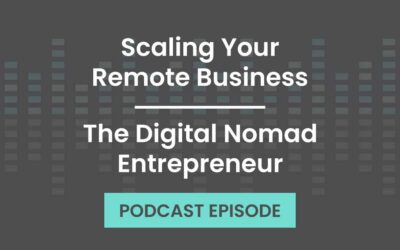We all know that first impressions are important. The same goes for businesses. In order to make a great first impression, you need to have a strong brand identity. And one of the best ways to create a strong brand identity is by understanding and using archetypes.
Archetypes were first introduced by famed psychologist Carl Jung and are basically models of people, behaviors, or personalities. He believed that we all have inborn tendencies that play a role in influencing our behavior. Companies do best when they are communicate consistently as the archetype that is truest to their values, mission, and vision. By doing this, they are able to better communicate with their ideal customer.
So what is your brand archetype? And how can you use it to better communicate with your ideal customer?
The 12 Brand Archetypes
The 12 Brand Archetypes are: The Outlaw, The Magician, The Innocent, The Everyman, The Hero, The Caregiver, The Explorer, The Ruler, The Lover, The Creator, The Jester, and finally the Sage.
To find out which archetype your business is best suited for, ask yourself these questions:
- What does my ideal customer want?
- What do I want my business to be known for?
- How can I better communicate with my ideal customer?
- What is my mission and vision?
From there you will be able to narrow it down and find the archetype that is truest to your brand. Once you have found your archetype, you can start using it to better communicate with your ideal customer.
Let’s take a look at each of the Brand Archetypes
The Outlaw
The Outlaw Archetype is all about inspiring others to break the mold and forge their own path. If you identify with this archetype, then you’re probably a natural-born rebel who’s always looking for ways to challenge the status quo. Your ideal customer is someone who is tired of the same old thing and is ready for something different. To better communicate with your ideal customer, focus on creating messaging that is disruptive and challenges conventional thinking.
Outlaw Brand Examples:
- Harley Davidson
- Diesel
- Virgin
The Magician
The Magician Archetype is all about inspiring others and helping them to see the potential in themselves. If this is your business’ archetype, then your ideal customer is likely someone who is busy and may not have the time or inclination to see their own potential. You can use your magical powers of persuasion to help them see what is possible and to get them excited about working with you.
Magician Brand Examples:
- Disney
- TEDX
- Dyson
The Innocent
The Innocent Archetype is all about hope, purity, and being childlike. Innocent brands are honest and pure and believe everyone should be who they truly are deep down. This makes them incredibly inspiring to their customers, giving them something to believe in and aspire to. By aligning with the Innocent Archetype, these business owners can tap into a powerful source of inspiration and motivation.
Innocent Brand Examples:
- Aveeno
- Dove
- Whole Foods
The Everyman
The Everyman Archetype is all about being relatable and approachable, which makes it easy for potential customers to connect with your brand. Everyman brands are usually down-to-earth and provide honest, straightforward solutions that anyone can understand. Plus, the Everyman is always looking for ways to improve, making them the perfect partner for businesses that are constantly striving to reach new heights.
Everyman Brand Examples:
- Ikea
- Target
- Budweiser
The Hero
The Hero Archetype is all about being brave and courageous. This archetype inspires customers to be brave and to take risks. It can be the perfect archetype for businesses that want customers to feel protected and safe in their capable hands.
Hero Brand Examples:
- Nike
- Gatorade
- Red Cross
The Caregiver
The Caregiver Archetype is all about being helpful and compassionate and can be a powerful way to connect with customers and inspire them to take action. This archetype can be an effective way to build trust and create loyalty among customers.
Caregiver Brand Examples:
- Unicef
- World Wildlife Fund (WWF)
- Toms
The Explorer
The Explorer Archetype is all about being curious and independent. For businesses, the Explorer Archetype is all about appealing to customers who want to feel a sense of independence. This can be done by promoting a sense of curiosity and exploration in your marketing and branding. Doing so will inspire your ideal customers to keep coming back for more.
Explorer Brand Examples:
- Jeep
- Patagonia
- REI
The Ruler
If you’re building a brand that exudes authority and power, the Ruler Archetype may describe you. This archetype is all about control and domination, and businesses that use it are often able to appeal to customers who are looking for a sense of stability and security. If you’re looking for a brand that can inspire you to reach your potential, the Ruler archetype is definitely one to consider.
Ruler Brand Examples:
- Rolex
- Louis Vuitton
- Mercedes-benz
The Lover
The Lover archetype is all about being passionate and sensual, and is focused on meaningful, intimate relationships – romantic and otherwise. Any brand that implicitly promises beauty and sex appeal is a Lover brand.
Lover Brand Examples:
- Alfa Romeo
- Godiva Chocolate
- Victoria’s Secret
The Creator
The Creator Archetype is all about bringing new and innovative ideas to life. If you’re looking to appeal to customers who are looking for something different, this is the archetype for you. By embodying the creator archetype, you can inspire your customers and help them see the world in a new light. The creator brand is one that is constantly pushing the envelope and coming up with new ideas. Note that it’s important to keep a Creator brand fresh and interesting.
With the combination of creativity and innovation involved in web design The Creator is a natural fit for many WordPress agencies.
Creator Brand Examples:
- Apple
- Pixar
- Adobe
The Jester
The Jester Archetype is all about being fun and playful. This archetype is often used by businesses that don’t take themselves too seriously. The Jester is someone who is always up for a good time and loves to make people laugh. If you’re looking to stand out in the typically dry world of tech, the Jester Archetype may be a great fit. Your customers will appreciate your sense of humor and your ability to make them laugh.
Jester Brand Examples:
- Old Spice
- Geico
- Dollar Shave Club
The Sage
The Sage Archetype is all about being wise and knowledgeable – the Yoda of the archetypes. This archetype is often used by businesses that want to appeal to customers who are looking for guidance. The Sage is someone who is looked up to for their wisdom and expertise. They are often seen as thought leaders in their field. If you are looking to position your brand as a trusted source of information and guidance, then the Sage Archetype is a good choice for you.
Sage Brand Examples:
- CNN
- University of Oxford
Group Training and Discussion
We discussed Brand Archetypes in the Focus On Your Biz weekly “Focus Group” this week. I broke down the concept of Brand Archetypes, then did a brief review of each of the twelve. It was opened up to the group to discuss which one (or ones) most resonated with them, and there were a few surprising choices! You can watch the video below or on YouTube.
Conclusion
The 12 Brand Archetypes are a great way to better understand the personality of your business and why certain types of customers that are drawn to your brand. Each archetype has its own strengths and weaknesses, so it’s important to choose the one that is most likely to attract your ideal customer.
As a WordPress agency owner, it is easy to resonate with the Creator Archetype, but if you actively try to guide and consult your clients, the Sage Archetype may be a better fit for you. The Hero Archetype also resonated with a few web professionals in the Focus Group video above. There is no right or wrong answer, and your archetype doesn’t pigeonhole you into a small box. Rather, it gives you a set of traits, motivations, and style that you can model to be sure you are communicating consistently and effectively with your target customers.
Leave a comment below sharing which archetype best represents your brand!






0 Comments